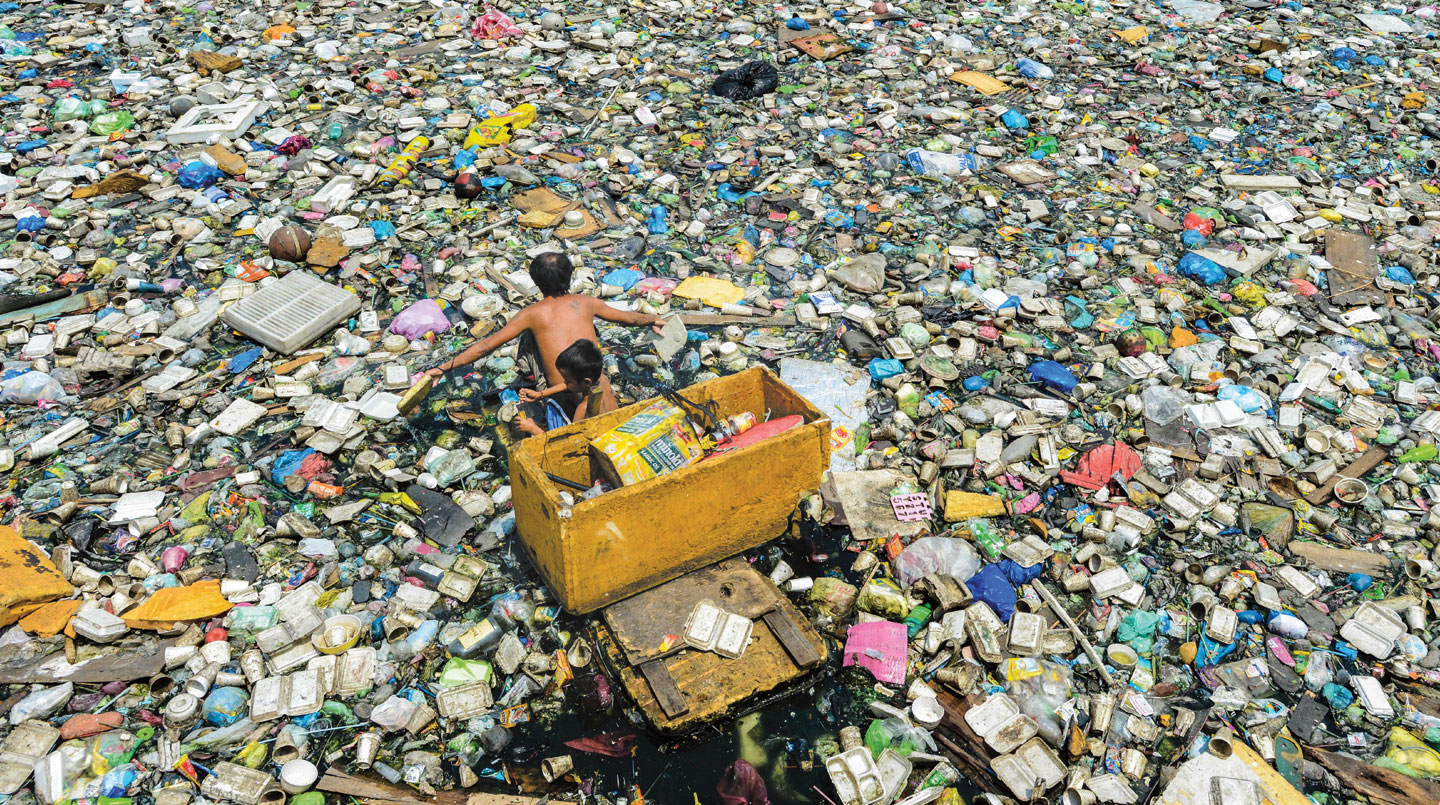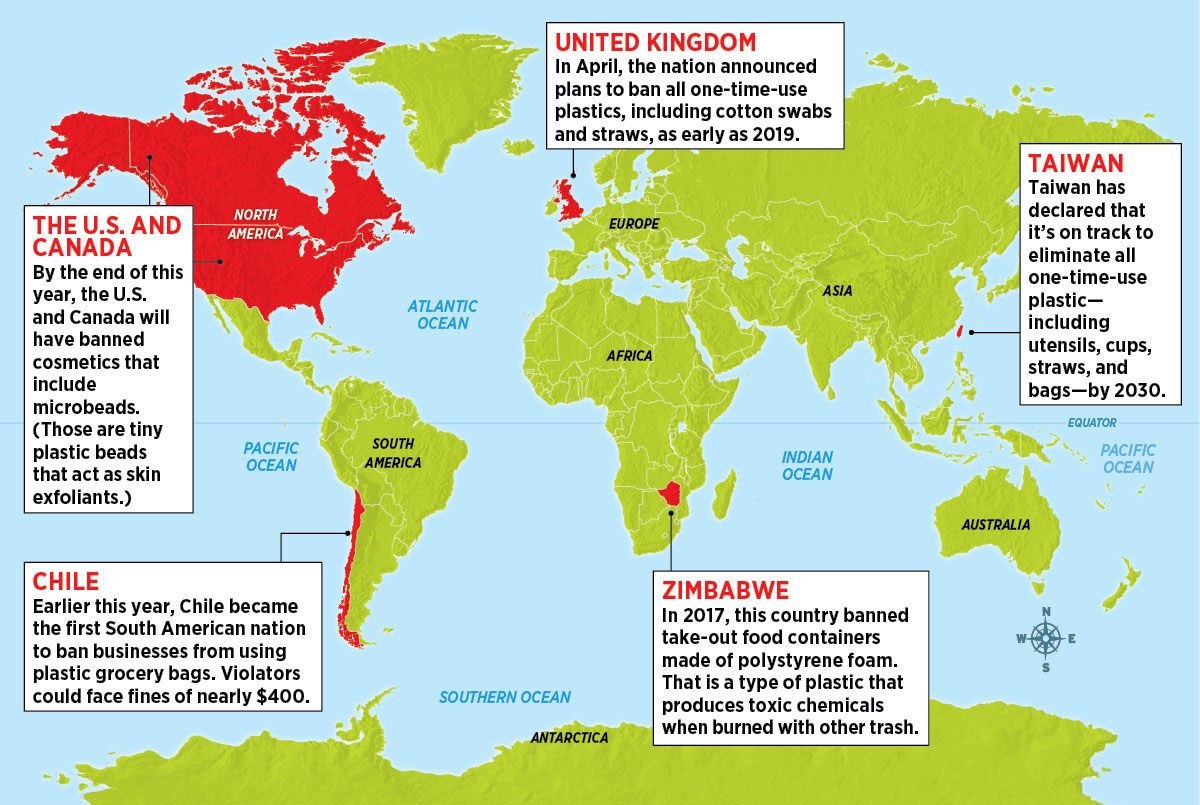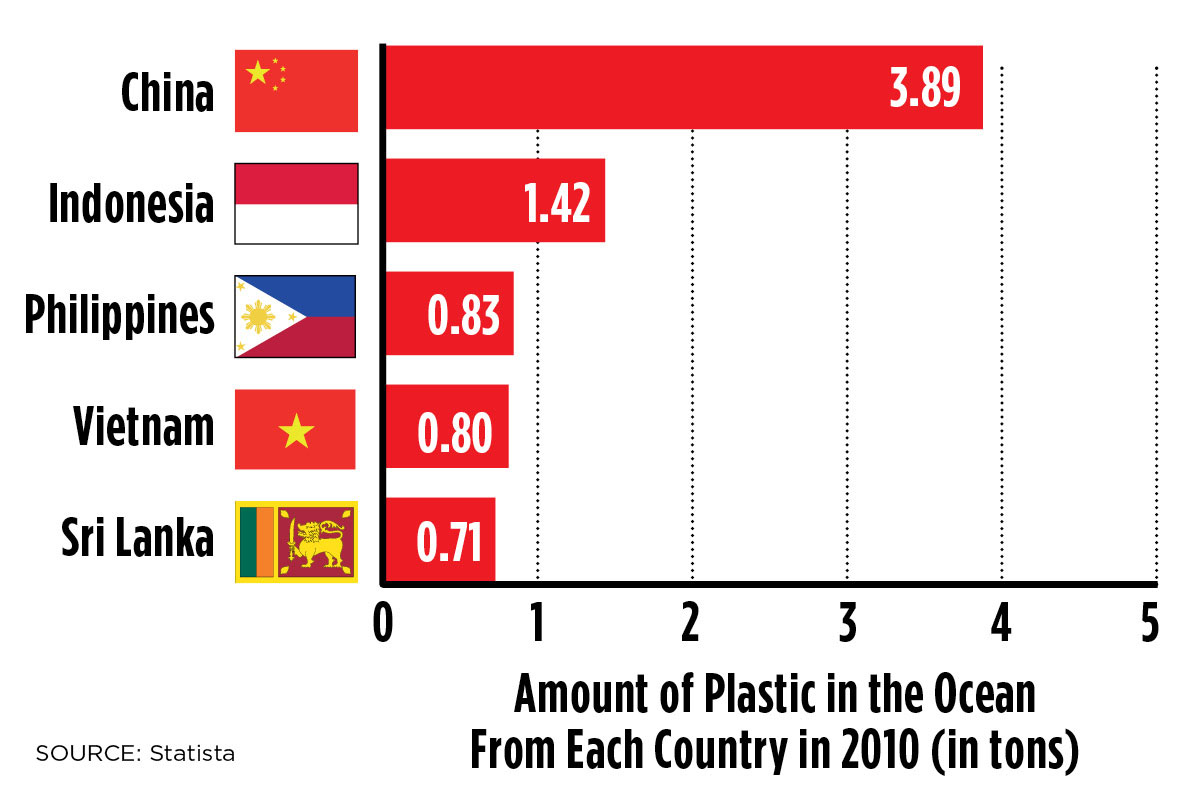When plastic waste ends up in the ocean, the results are often tragic. Earlier this year, rescuers found a sick pilot whale near the shore of southern Thailand. It couldn’t swim. In fact, it could hardly breathe.
Later, as veterinarians tended to the animal, it vomited five plastic grocery bags. The whale died shortly after. Tests eventually revealed that it had more than 17 pounds of plastic in its stomach, including another 80 or so plastic bags.
That’s just one example of how plastic can be deadly to animals. Nearly 700 ocean species—from zooplankton and fish to sea turtles and dolphins—have been harmed by plastic. That damage ranges from eating it to getting stuck in it. For example, some animals get trapped in plastic six-pack drink holders. Others, including many bird species, suffocate inside plastic grocery bags.
And, of course, many sea creatures—like the pilot whale—eat plastic. In the ocean, sunlight, waves, and heat often break down plastic into pieces tinier than a pinkie fingernail. Those bits, called microplastics, become coated with algae over time. That makes them smell like food to many animals.
Some sea creatures are fooled into thinking microplastics are real food. They stuff themselves with it, to the point that they don’t have room in their stomachs for any actual food. They die from starvation as a result.
Eating plastic hurts animals in other ways too. The toxins in the plastic can seriously affect their behavior and digestion, and the ecosystem as a whole, says Matthew Savoca. He is a scientist who studies the effects of plastic on marine life.
“It affects not just the individual animals that eat plastic, but the animals that eat those animals,” he says.











